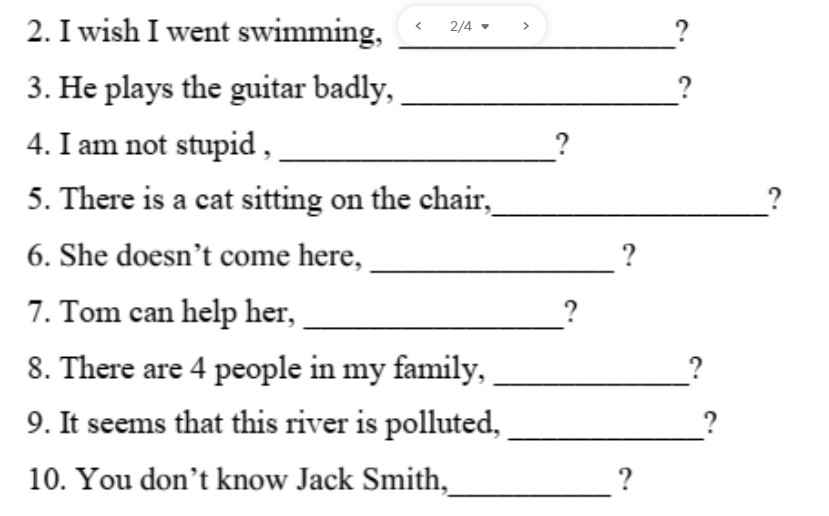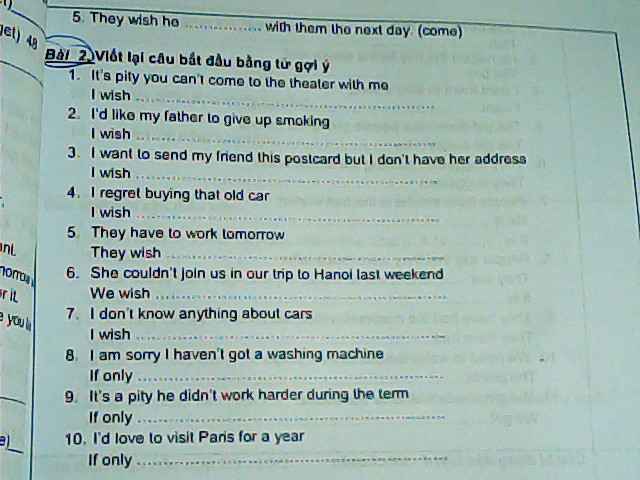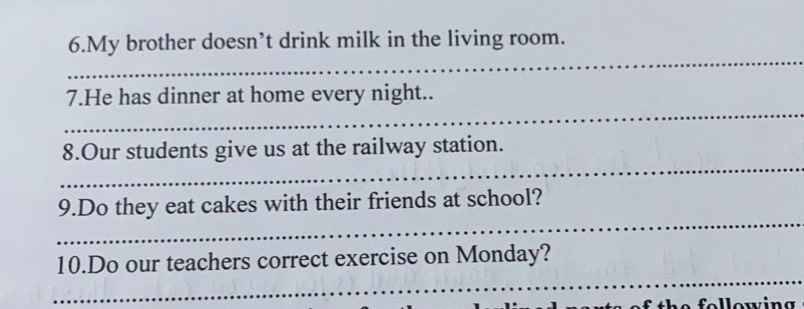Các câu hỏi tương tự
ai đã từng lm bài này hoặc bt bài này thì giúp e vs ạLISTENING: Listen and complete it with the missing word(s) So, welcome to your introductory geography lecture. Well begin with some basics. Firstly. what do we learn by (1)……………………............………? Well, we learn a great deal about all the processes that have affected and that continue to affect the earths surface. But we learn far more than that, because studying geography also informs us about the different kinds of relationships that develop...
Đọc tiếp
ai đã từng lm bài này hoặc bt bài này thì giúp e vs ạ
LISTENING: Listen and complete it with the missing word(s)
So, welcome to your introductory geography lecture. We'll begin with some basics. Firstly. what do we learn by (1)……………………............………? Well, we learn a great deal about all the processes that have affected and that continue to affect the earth's surface. But we learn far more than that, because studying geography also informs us about the different kinds of relationships that develop between a (2)…………......………………… and the people that live there. Okay. We like to think of geography as having two main branches. There's the study of the nature of our planet - its physical features, what it actually looks like- and then there's the study of the ways in which we choose to live and of the impact of those on our planet. Our current use of carbon fuels is a (3)……………............................……………. of that. But there are more specific study areas to consider too, and we'll be looking at each of these in turn throughout this semester. These include bio-physical geography, by which I mean the study of the natural environment and all its living things. Then there's topography that looks at the shapes of the land and oceans. There's the study of political geography and social geography too, of course, which is the study of communities of people, We have (4)………….........................………………. which we examine all kinds of resources and their use - agriculture, for example. Next comes historical geography- the understanding of how people and their environments and the ways they interact have changed over a period of time - and (5)……………………....................…….., an aspect l'm particularly interested in, which takes as its focus the location of cities, the services that those cities provide, and migration of people to and from such cities. And lastly, we have cartography. That's the art and science of map- making. You'll be doing a lot of that! So, to summarise before we continue, we now have our (6)…………………………...…….. is important because without geographical knowledge, we would know very little about our surroundings and we wouldn't be able to identify all the problems that relate to them. So, by definition, we wouldn't be in an (7)………….............................…………….. to work out how to solve any studying this of them.
Okay, now for some practicalities. What do geographers actually do? Well, we collect data to begin with! You'll be doing a lot of that on your (8)…………………….......................…….! How do we do this? There are several means. We might, for example, conduct a census - count a population in a given area perhaps. We also need images of the earth's surface which we can produce by means of computer-generation technology or with the help of (9)…………………................................……….. We've come a very long way from the early exploration of the world by sailing ships when geographers only had pens and paper at their disposal. After we've gathered our information, we must analyse it! We need to look for patterns, most commonly those of (10)……………………............................... This kind of information helps us to predict and resolve problems that could affect the world we live in. But we don't keep all this information confidential. We then need to publish our findings so that other people can access it and be informed by it. And one way in which this information can be published is in the (11)…………...........................…………….. You'll all have used one at some stage of your life already. Let's consider the benefits of maps from a geographer's perspective.
Maps can be folded and put in a pocket and can provide a great store of reference when they're collected into an atlas. They can depict the physical features of the entire planet if necessary, or, just a small part of it in much (12)…………………............................….. But there is a drawback. You can't exactly replicate something that is three-dimensional, like our planet, on a flat piece of paper, because paper has only two dimensions, and that means there'll always be a certain degree of distortion on a map. It can't be avoided. We can also use (13)…………………......................……… the earth. These are great for showing all kinds of geographical features that are not easy to see from the ground. You can easily illustrate areas of diseased trees or how much traffic is on the roads at a given time or information about deep sea beds, for example. pictures taken by cameras at (14)…………….....................................….. above ... Then there are Landsats. These are satellites that circle the earth and transmit visual information to computers at receiving stations. They circle the earth several times a day and can provide a mass of information - you'll all be familiar with the information they give us about the weather, for example. So, what we're going to do now is look at a (15)……….....………....………. in which you'll see all these tools.
Mn giúp mk bài này vs.

Các bn giúp mik bài này vs
bài sử dunhj từ ngữ gạch chân dể đặt cau cho phù hợp vs sắp xếp câu cần chú ý điềuf j vs lm sao dẻ làm tốt dạng bài tập này??
Fill a suitable word in each sentence. Moj người dịch câu này e vs. Djch đ 5☆ nha


mn giúp e 2 bài này với
Mn ơi mn giúp mk bài này vs ạ. Mn ghi rõ thác thì đc dùng ra nhé 
Anh chị ơi giúp e với ạ e dùng bài này làm đề cương ôn thi ạ, e cảm ơn nhiều <3

GIÚP MIK LM BÀI NÀY VS Ạ . MIK ĐANG CẦN RẤT LÀ GẤP MONG BN THÔNG CẢM ! THANK YOU!


Mng ai thi Anh HKI lớp 8 chưa ạ. Cho e xin đề vs (có bài giải lun càng tốt ạ) E cảm ơnnn
















